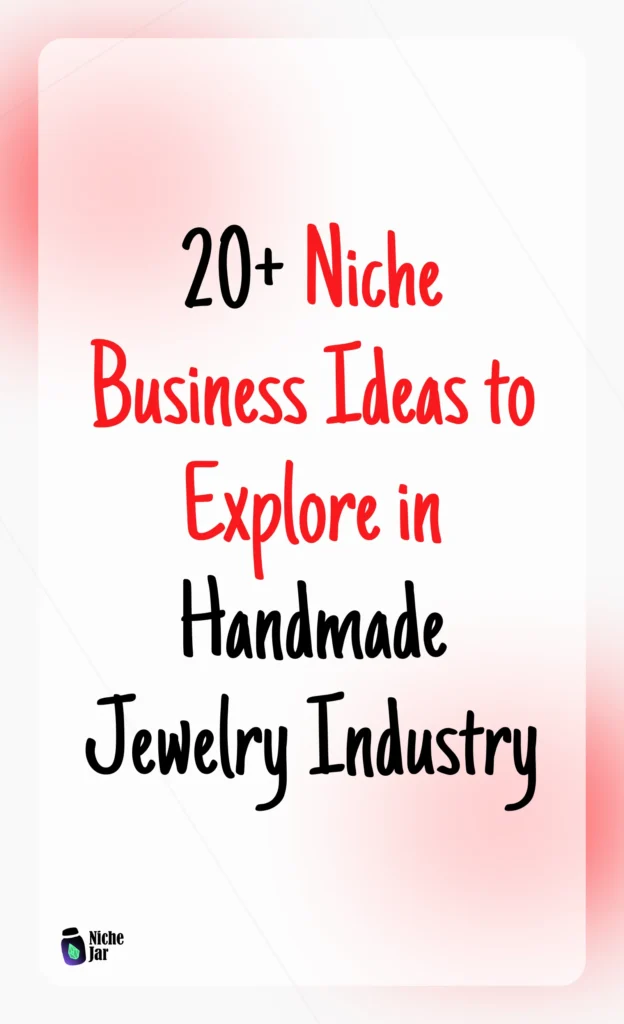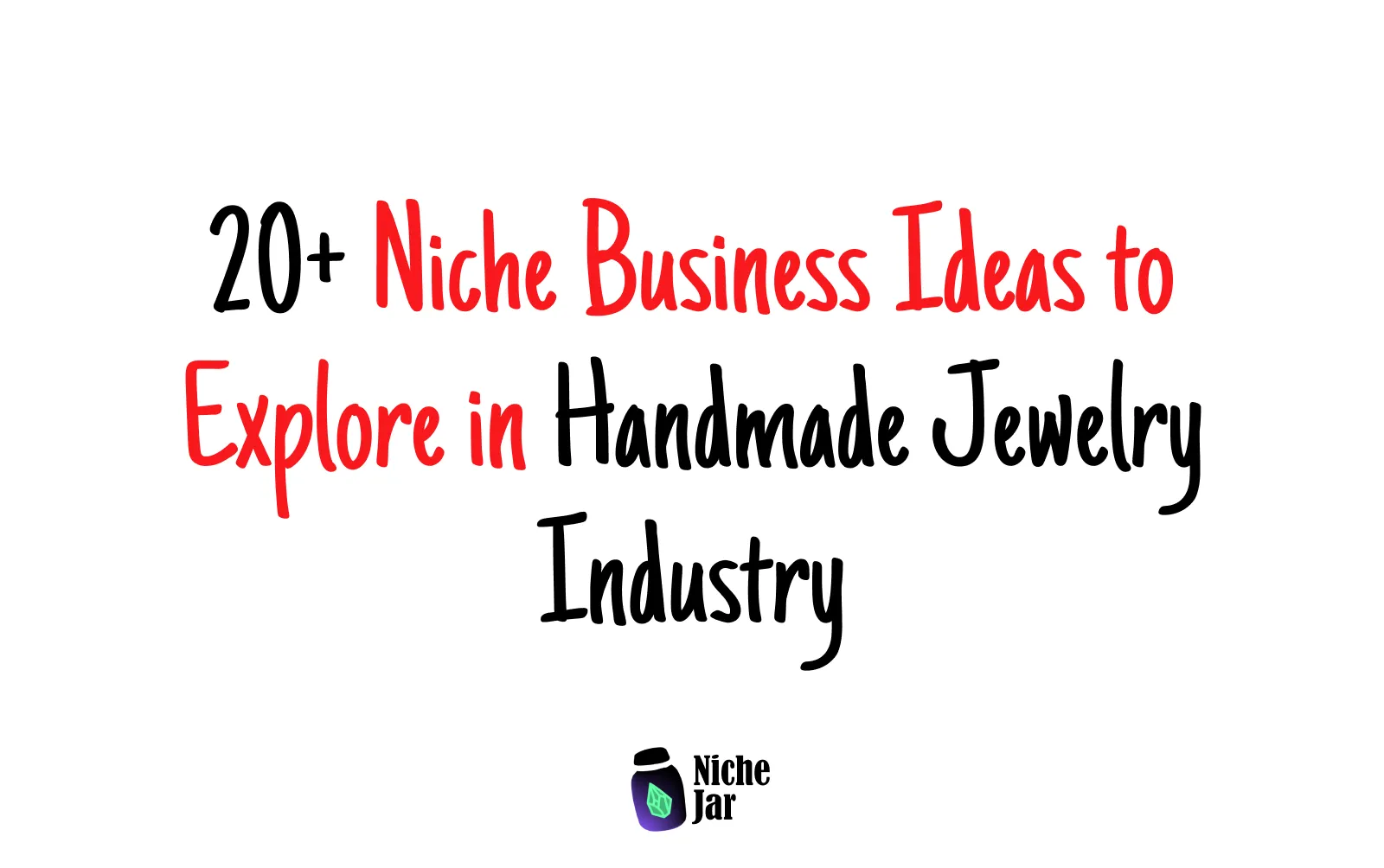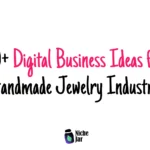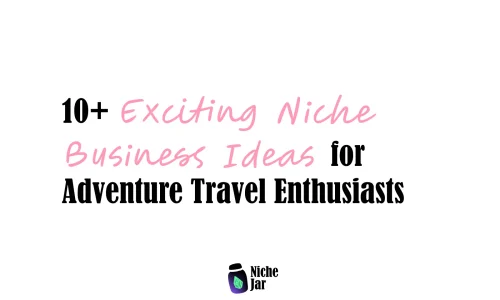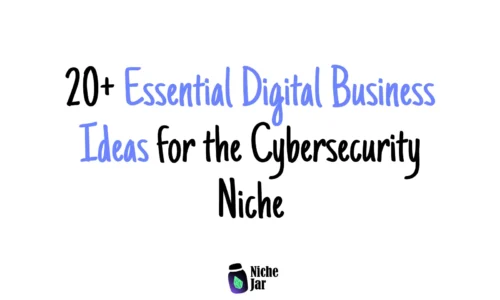- Senia
- 0 Comments
- 633 Views
Sometimes the best business ideas come from simple things we create with our own hands. From what I’ve seen, the handmade jewelry world is full of small niches that quietly bring steady income to everyday makers. If you’ve ever wondered how to turn jewelry-making into a profitable path, these 20+ niche business ideas to explore in the handmade jewelry industry might give you a solid place to start.
Starting a small business in the handmade jewelry space doesn’t require a big studio or expensive equipment. Many people begin at a kitchen table with just a few tools and a clear idea of who they want to help. I’ve noticed that the jewelry market can feel crowded, but when you look closer, there are dozens of overlooked niches where new makers still find room to grow. That’s why I believe exploring niche business ideas in the handmade jewelry industry can be a meaningful step for anyone hoping to earn extra income or build a long-term creative business.
This guide is meant to help you see what’s possible. Instead of broad, generic suggestions, we’ll walk through very specific niches, like personalized birth flower pieces, minimalist gemstone lines, pet-themed jewelry, cultural heritage collections, and even jewelry designed for specific professions. My hope is that this post gives you a mix of inspiration and clear steps so you can move forward with confidence, even if you’re still learning.
We’ll also look at startup costs, monetization methods, common challenges, and small case studies from everyday makers who found practical ways to grow. These examples aren’t meant to promise quick success. If anything, they show that progress usually comes from patience and steady work.
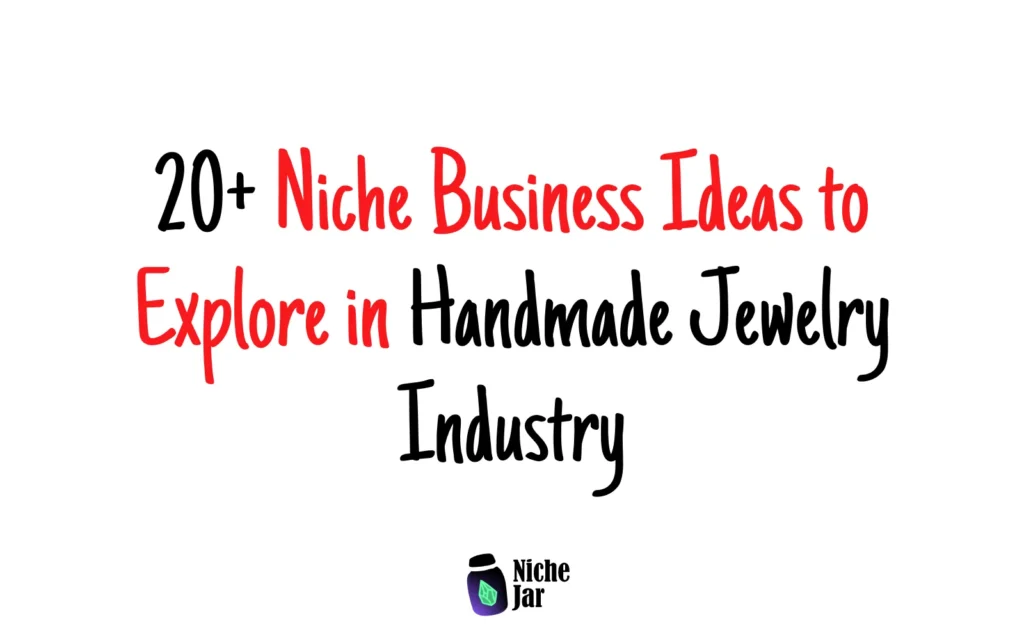
1. Minimalist Everyday Jewelry
Why it works: Minimalist designs are timeless and appeal to a broad audience who want simple pieces they can wear daily.
Steps to start:
- Invest in basic tools for working with silver, gold-plated, or stainless steel.
- Focus on clean lines and neutral tones.
- Start selling on Etsy or Instagram using lifestyle photos.
Challenges: Standing out in a competitive market.
Solutions: Build a brand around storytelling—why you design minimal pieces and how they fit into modern life.
Startup cost: $300–$800.
Monetization: Online sales, wholesale to boutiques.
Example: A small brand on Etsy specializing in tiny gold hoop earrings grew to 2,000+ sales by consistently posting styled photos.
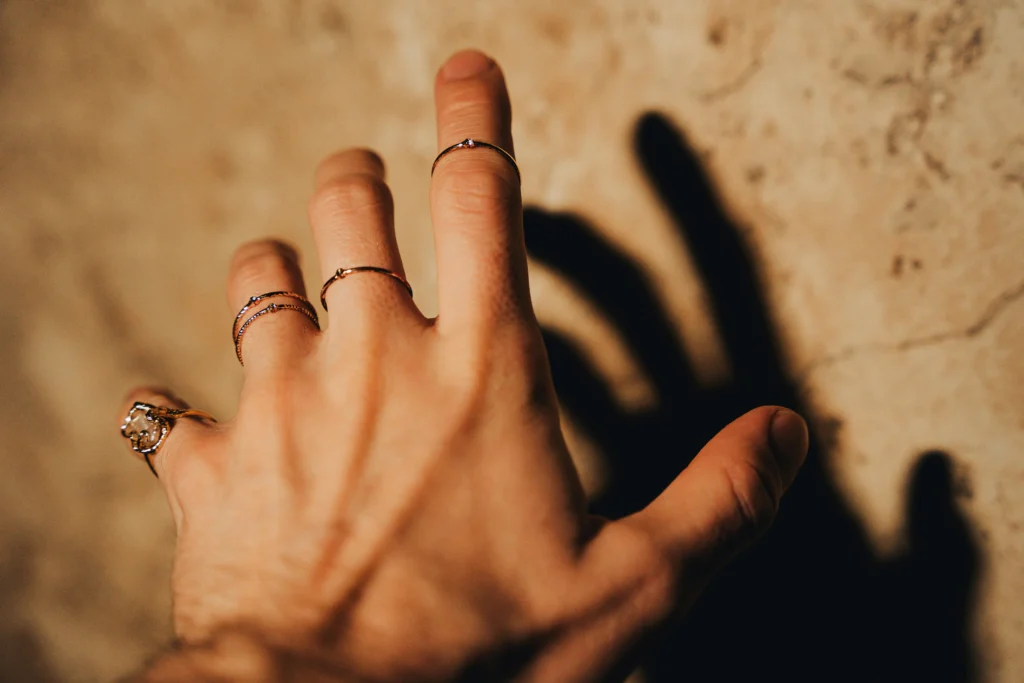
2. Personalized Name Necklaces
Why it works: Personalization has high emotional value, making customers willing to pay more.
Steps to start:
- Learn basic engraving or partner with a local engraver.
- Offer different fonts and metals.
- Market as gift-friendly, especially around holidays.
Challenges: Longer production times.
Solutions: Limit order slots or offer pre-designed templates for faster turnaround.
Startup cost: $500–$1,200.
Monetization: Direct-to-consumer sales with premium pricing.
Example: One seller reported earning $3,000 in their first holiday season by focusing only on name necklaces.
3. Bridal and Wedding Jewelry
Why it works: Weddings are high-spending occasions where people seek unique accessories.
Steps to start:
- Design custom bridal sets and bridesmaid gifts.
- Build connections with wedding planners.
- Use Pinterest marketing—it’s a powerful wedding planning hub.
Challenges: Seasonal demand.
Solutions: Expand into anniversary and gift jewelry during off-seasons.
Startup cost: $800–$2,500.
Monetization: High-ticket custom pieces.
Example: A jeweler offering vintage-inspired bridal earrings generated consistent orders by collaborating with photographers.
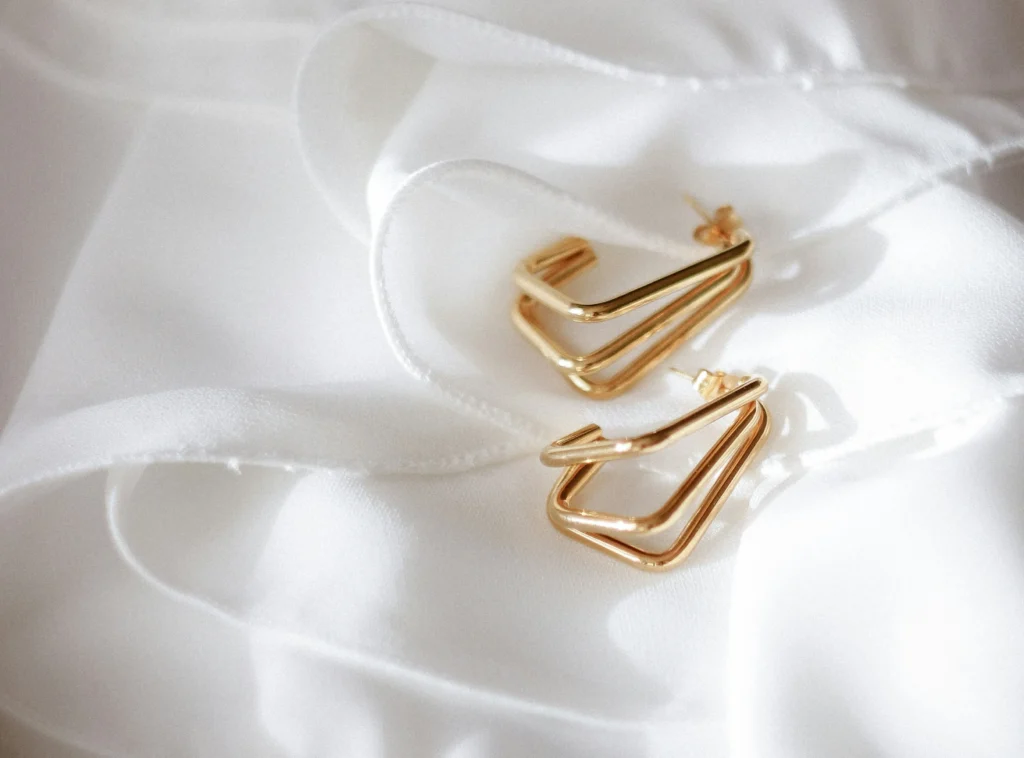
4. Boho and Festival Jewelry
Why it works: Appeals to free-spirited, trend-driven buyers, especially around music festivals.
Steps to start:
- Use natural materials like feathers, shells, or beads.
- Sell at pop-up events near festivals.
- Promote through Instagram reels or TikTok styling videos.
Challenges: Trend-driven market can fade.
Solutions: Adapt designs seasonally and stay active on trend platforms.
Startup cost: $200–$700.
Monetization: Event sales + online store.
5. Men’s Handmade Jewelry
Why it works: Men’s accessories are growing, yet still less saturated.
Steps to start:
- Focus on leather bracelets, stainless steel rings, or bead necklaces.
- Use simple branding and neutral tones.
- Partner with men’s lifestyle influencers.
Challenges: Narrower audience.
Solutions: Target urban fashion markets and online forums.
Startup cost: $300–$1,000.
Monetization: Higher margins due to exclusivity.
Example: A small brand gained traction by marketing “masculine minimalist” bracelets on Instagram.
6. Spiritual and Healing Jewelry
Why it works: Many people are drawn to jewelry made with crystals, gemstones, or symbolic designs because they associate them with healing energy, mindfulness, or spirituality.
Steps to start:
- Research the meanings of different stones (e.g., rose quartz for love, amethyst for calm).
- Create simple bracelets, pendants, or rings featuring these stones.
- Market through wellness communities, yoga studios, or spiritual social media groups.
Challenges: Skepticism from some buyers.
Solutions: Focus on storytelling and the beauty of the stones, while allowing customers to connect with their own beliefs.
Startup cost: $400–$1,000.
Monetization: Online shop, wholesale to wellness boutiques, gift sets.
Example: A seller on Instagram grew a steady following by sharing daily affirmations alongside crystal jewelry photos.
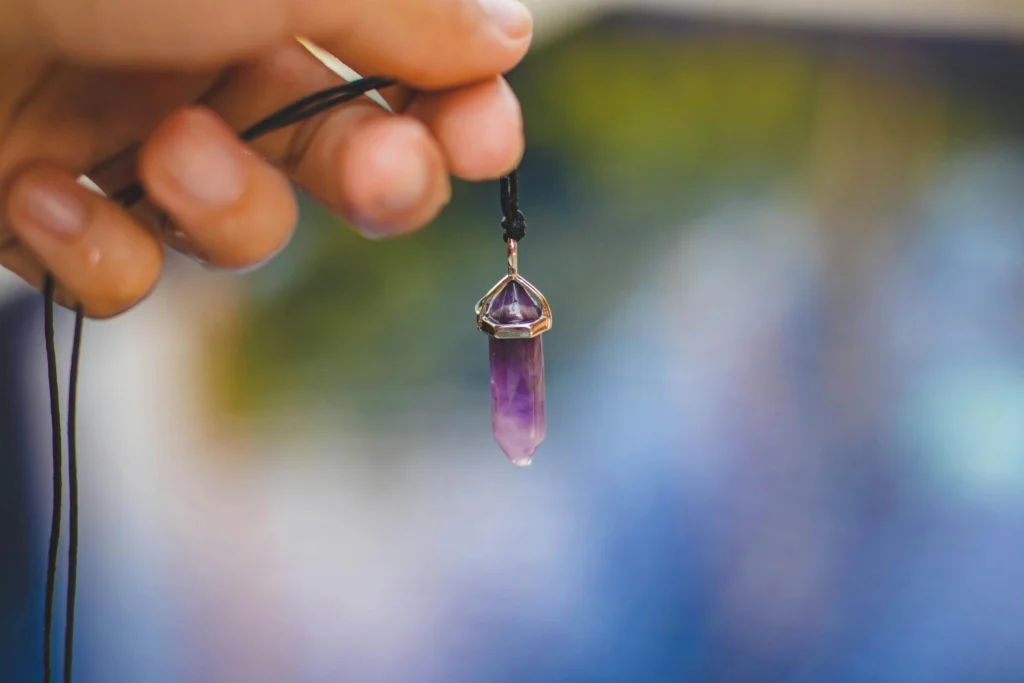
7. Children’s Jewelry Line
Why it works: Parents and relatives love buying safe, cute jewelry for kids as gifts.
Steps to start:
- Use hypoallergenic materials like stainless steel or sterling silver.
- Create fun themes—animals, rainbows, initials.
- Offer gift-ready packaging.
Challenges: Safety regulations for children’s products.
Solutions: Research local laws, use lead- and nickel-free materials, and clearly market as child-safe.
Startup cost: $300–$800.
Monetization: Online sales, local gift shops, craft fairs.
Example: A mompreneur built a local brand by selling personalized kids’ charm bracelets at school fairs.
8. Upcycled Jewelry from Recycled Materials
Why it works: Eco-conscious shoppers love sustainable products that repurpose waste into something beautiful.
Steps to start:
- Collect discarded metals, wood, or vintage beads.
- Use hand tools to reshape and design.
- Tell the story of sustainability in every product listing.
Challenges: Materials can be inconsistent.
Solutions: Establish reliable sources like thrift stores, antique markets, or recycling centers.
Startup cost: $100–$400 (mainly tools).
Monetization: Eco marketplaces, Instagram marketing, eco-fairs.
Example: A small Etsy shop gained traction by turning broken watch parts into steampunk-inspired necklaces.
9. Luxury Handmade Jewelry
Why it works: Some buyers want exclusivity and are willing to pay premium prices for handcrafted fine jewelry.
Steps to start:
- Learn silversmithing or goldsmithing skills.
- Work with precious metals and gemstones.
- Build a strong brand identity around craftsmanship.
Challenges: High startup cost and longer production times.
Solutions: Begin with small capsule collections, reinvest profits, and focus on custom commissions.
Startup cost: $2,000–$10,000 depending on materials.
Monetization: High-ticket sales, custom orders, gallery showcases.
Example: An artisan built a luxury line by offering one-of-a-kind rings, attracting attention through Instagram collaborations.
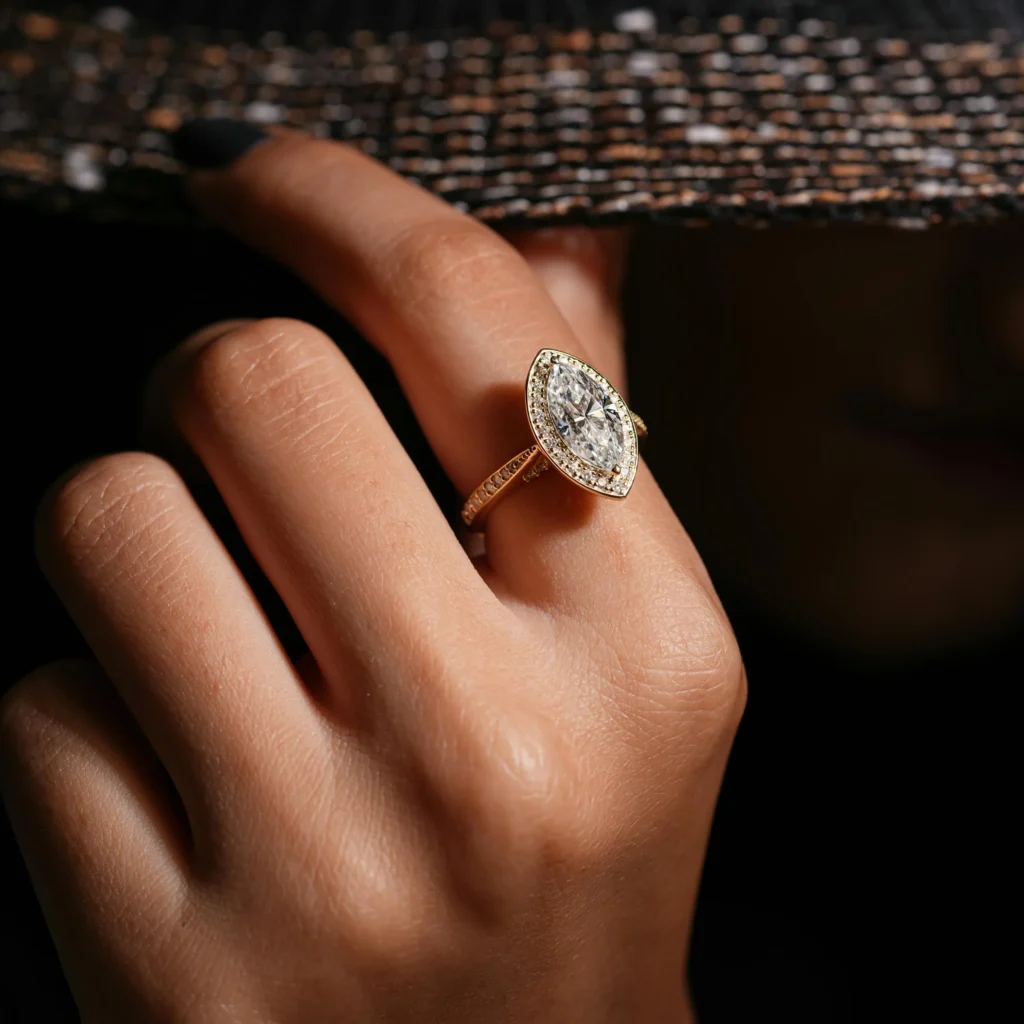
10. Resin Jewelry Art
Why it works: Resin allows endless creativity—encasing flowers, glitter, or pigments in unique shapes.
Steps to start:
- Buy resin kits and silicone molds.
- Experiment with dried flowers, metallic flakes, or colorful pigments.
- Sell via Instagram reels and TikTok demos (process videos do very well).
Challenges: Working safely with resin (ventilation needed).
Solutions: Use protective gear, work in ventilated spaces, and educate buyers about resin care.
Startup cost: $150–$500.
Monetization: Online sales, resin art bundles, DIY kits.
Example: A crafter gained 50k TikTok followers just by posting resin pour process videos and linked them to an Etsy shop.
11. Polymer Clay Earrings
Why it works: Lightweight, colorful, and endlessly customizable—perfect for trend-driven buyers.
Steps to start:
- Purchase polymer clay, cutters, and baking tools.
- Create themed collections (seasonal, geometric, floral).
- Promote via Instagram, especially styled flat-lay photos.
Challenges: Market saturation.
Solutions: Develop a signature style or niche (e.g., bold African prints, pastel minimalism).
Startup cost: $100–$300.
Monetization: Online sales, bundles, collaborations.
Example: A college student paid off tuition by selling polymer clay earrings in her campus town.
12. Wire-Wrapped Gemstone Jewelry
Why it works: Combines craftsmanship with natural beauty, appealing to buyers who appreciate artistry.
Steps to start:
- Learn wire-wrapping techniques using copper, silver, or gold-filled wire.
- Work with semi-precious stones.
- Offer unique designs (e.g., tree-of-life pendants).
Challenges: Time-intensive.
Solutions: Offer a mix of simple and complex designs to balance workload.
Startup cost: $150–$500.
Monetization: Online shops, craft fairs, teaching wire-wrapping workshops.
Example: A small shop gained recognition by creating wire-wrapped moonstone pendants and sharing behind-the-scenes videos.
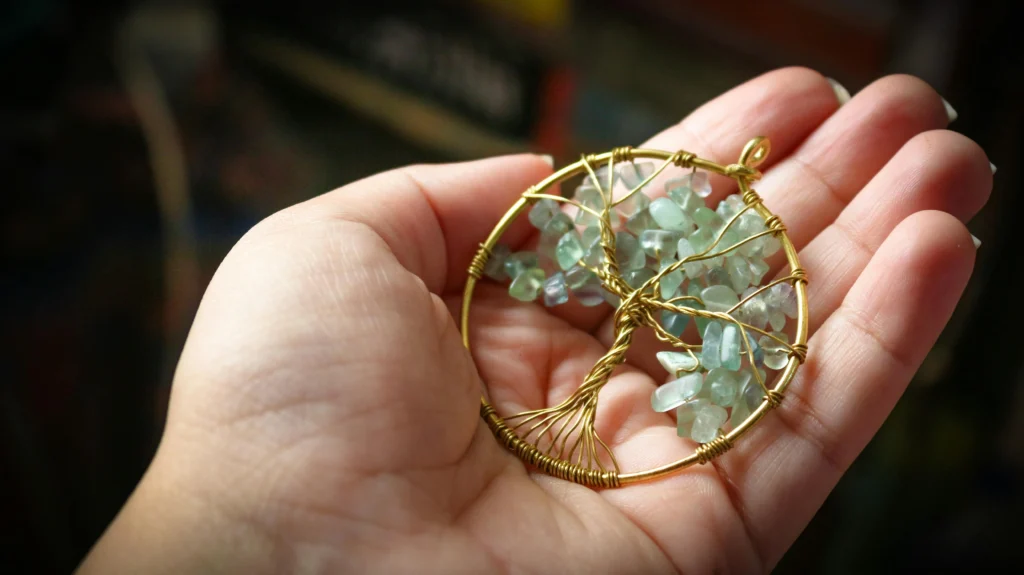
13. Cultural or Heritage-Inspired Jewelry
Why it works: Many customers appreciate jewelry that reflects cultural identity or traditional craftsmanship.
Steps to start:
- Research and honor the traditions you’re inspired by.
- Use authentic materials where possible.
- Share the cultural story behind each design.
Challenges: Cultural appropriation concerns.
Solutions: Stay respectful, collaborate with artisans from that culture if possible.
Startup cost: $300–$1,000.
Monetization: Online and in cultural festivals.
Example: A creator specializing in Celtic knot jewelry found consistent demand among Irish heritage communities abroad.
14. Zodiac and Astrology Jewelry
Why it works: Astrology is popular and has a passionate audience, especially on social media.
Steps to start:
- Design charms, pendants, or bracelets based on zodiac signs or constellations.
- Market with horoscope-themed content on Instagram/TikTok.
- Offer custom birth chart jewelry.
Challenges: Trend cycles can change quickly.
Solutions: Expand into spiritual jewelry to keep relevance.
Startup cost: $200–$600.
Monetization: Personalized orders, subscription boxes.
Example: A seller gained traction by releasing monthly “new moon” jewelry drops tied to astrology events.
15. Handmade Beaded Jewelry
Why it works: Beading is accessible, versatile, and appeals to many age groups.
Steps to start:
- Invest in bead kits (glass, crystal, seed beads).
- Start with bracelets and necklaces.
- Sell as affordable, everyday fashion.
Challenges: Highly competitive.
Solutions: Develop signature color palettes or themes (e.g., ocean-inspired).
Startup cost: $100–$300.
Monetization: Craft fairs, bundles, social media.
Example: A small business owner built a following by offering “stackable bracelet sets” on Etsy.
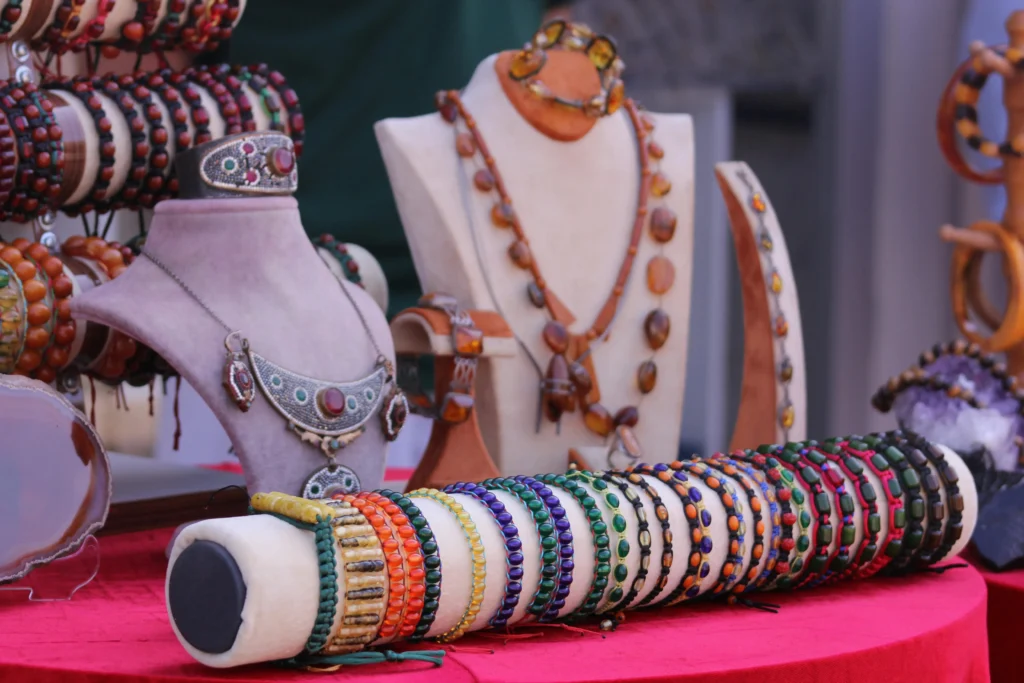
16. Pet-Themed Jewelry
Why it works: Pet owners love wearing accessories that celebrate their furry friends.
Steps to start:
- Create paw-print charms, engraved pet names, or lockets with pet photos.
- Market in pet-loving communities and online groups.
Challenges: Niche audience.
Solutions: Partner with pet brands or influencers.
Startup cost: $200–$700.
Monetization: Online sales, gift packages, cross-selling with pet products.
Example: One Etsy seller reached 10k sales offering personalized paw-print necklaces.
17. Custom Birthstone Jewelry
Why it works: Birthstones are meaningful gifts tied to identity and special occasions.
Steps to start:
- Offer rings, bracelets, and pendants with gemstone settings.
- Allow personalization with initials or engravings.
- Target birthdays, anniversaries, and Mother’s Day markets.
Challenges: Sourcing quality gemstones.
Solutions: Partner with trusted gemstone suppliers.
Startup cost: $500–$2,000.
Monetization: Premium pricing for meaningful gifts.
Example: A small shop thrived by offering “family birthstone rings” for mothers.
18. Seasonal Jewelry Collections
Why it works: Customers love themed jewelry for holidays like Christmas, Valentine’s, or Halloween.
Steps to start:
- Plan collections months in advance.
- Use thematic colors and motifs (hearts, snowflakes, pumpkins).
- Market heavily during holiday gift seasons.
Challenges: Limited selling window.
Solutions: Diversify into non-seasonal designs too.
Startup cost: $200–$500.
Monetization: Seasonal drops, holiday fairs, online bundles.
Example: A crafter earned $2,000 in one holiday season by focusing only on Christmas earrings.
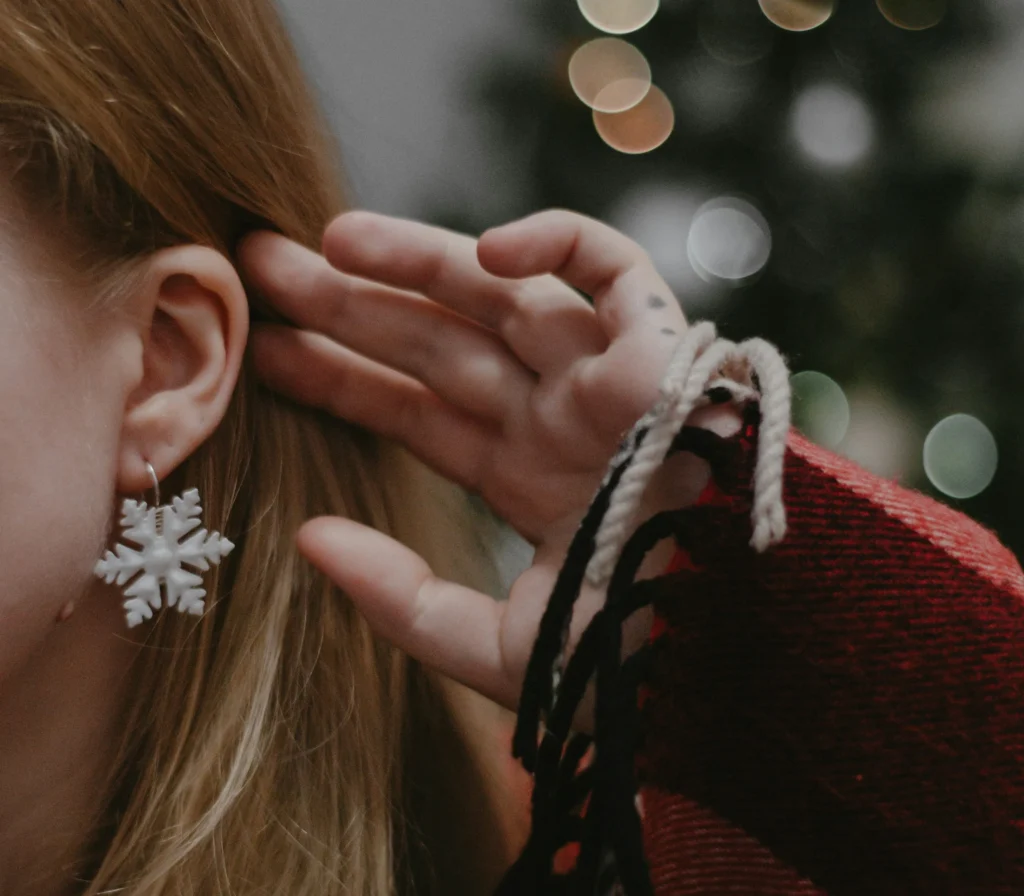
19. Subscription Box for Handmade Jewelry
Why it works: Recurring revenue model with excitement for surprise pieces each month.
Steps to start:
- Curate 1–2 exclusive pieces per month.
- Offer tiered subscription levels (basic vs premium).
- Market with unboxing videos.
Challenges: High commitment and consistency needed.
Solutions: Start small with quarterly boxes before moving to monthly.
Startup cost: $800–$2,000.
Monetization: Monthly subscriptions, upsells.
Example: A small business reached 200 subscribers by offering $25/month jewelry boxes.
20. Handmade Jewelry Workshops & Classes
Why it works: Many people want to learn jewelry-making as a hobby or skill.
Steps to start:
- Offer in-person workshops at local craft centers.
- Create online classes on platforms like Skillshare or Udemy.
- Sell starter kits alongside tutorials.
Challenges: Marketing the classes effectively.
Solutions: Share short “how-to” clips on social media to attract students.
Startup cost: $300–$1,000.
Monetization: Workshop fees, online course sales, DIY kits.
Example: A jewelry maker diversified income by teaching weekend workshops at a community center.
21. Jewelry Repair and Customization Service
Why it works: Not everyone wants new jewelry—many need old pieces repaired or updated.
Steps to start:
Partner with local jewelers for referrals.
Challenges: Requires skill and steady hand.
Solutions: Take online or local courses to learn repair techniques.
Startup cost: $500–$1,500.
Monetization: Service-based income, upselling redesigns.
Example: A jeweler built steady side income repairing clasps and resizing rings for local customers.
From what I’ve seen, the handmade jewelry industry offers so many niches that it’s less about finding a “perfect” one and more about testing what feels right for you. Whether it’s minimalist rings, eco-friendly designs, or personalized name necklaces, each idea comes with unique opportunities and challenges.
Remember, every journey starts small. You don’t need to master everything at once—just pick one idea, test it, and learn from the process. Over time, with patience and consistency, you may find your small jewelry hobby becoming a rewarding side business or even a full-time path.
If you’re curious about other industries or niches beyond jewelry, you’ll find more guides here on Nichejar.com. I’d love to hear which idea inspired you most, so feel free to share your thoughts or experiences.
Success in handmade jewelry doesn’t come overnight, but with dedication, storytelling, and a touch of creativity, it’s absolutely possible.
TLDR
In short:
- Personalized name jewelry is timeless and profitable.
- Minimalist everyday jewelry appeals to wide audiences.
- Eco-friendly and recycled jewelry attract conscious buyers.
- Wedding and bridal jewelry are high-spending markets.
- Pet-themed and baby keepsake jewelry serve sentimental buyers.
- Men’s jewelry, zodiac pieces, and fandom-inspired designs tap into underserved niches.
- Subscription boxes and repair services provide recurring income streams.
